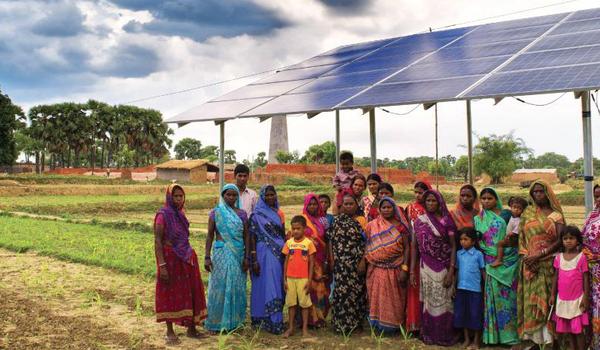
HEAVY INDIA'S ENERGY

FT - One of the proudest boasts of ministers in the Indian capital of New Delhi is that their country now finally has surplus power. This follows years in which industrialists wishing to set up factories had to build their own generating capacity alongside their factories. In other words, if you wanted to be in manufacturing you also had to be in the power business.
That India's provision of power is improving is to be welcomed as the price drops and should represent a boon to both Indian households and the corporate sector. In spite of this tailwind for India's economy, the state of the country's power industry looks more of a drag than it might appear at first glance.
As investors within and beyond India cheer the strong mandate the government of Prime Minister Narendra Modi won in local elections last week, they should look more closely at the economy and particularly at the power sector because it is symbolic of the difficulties India faces.
The deeply troubled power industry accounts for almost one-tenth of all bank loans in India, and thus poses a threat to already weakened lenders, according to data from Morgan Stanley. What is more, like so many other industries, the power business is facing significant technological challenges as the cost of solar energy continues falling.
Whether they are state-owned, or in the hands of private sector operators, most Indian power today comes from thermal plants — many of which are coal based. However, private sector investment is near zero which has helped send corporate demand for power plummeting. The load factor — a measure of a power plant's output — of privately owned power plants is currently running at 56 per cent, Ashish Gupta of Credit Suisse in Mumbai calculates. "Stress is rising in the power sector," he adds.
Banks have lent almost Rs4tn — amounting to 67 per cent of total debt in the sector — to private sector companies with interest coverage of less than one. The list of these cash-strapped borrowers includes Reliance Infra, JP Power, Rattan India, Adani Power, Tata Power and JSW Energy, according to research from Mr Gupta.
"Thermal energy faces a long winter," says the head of the Indian unit of one multinational power company.
India's banks can ill-afford to take any hit. While bad loans at many state-owned banks now stand at about 17 per cent of their total lending, analysts say that the figure for power sector debt is likely to be close to 25 per cent. The sheer size of the bad loans means the debt has become a constraint on banks' ability to lend, becoming a headwind to economic growth. Indeed, the magnitude of NPLs threatens to wipe out the weakest state-owned banks entirely.
Of course, the banks could theoretically take over troubled assets from their indebted power-producing customers, but there are few buyers at anything but fire sale prices. And the banks generally lack the capital to take the massive write-offs that fire sales demand. When the French power company Engie, the former GDF Suez, sold a majority stake in a Tamil Nadu power operator last year, the price was at a deeply distressed level, Mr Gupta adds.
Meanwhile, the pain caused by the advance of solar energy will only increase.
The tariff for solar energy has fallen to the point when recent auctions have seen power go for far less than Rs3.5 per kilowatt. Only thermal plants operating close to a coal mine can come close to matching that.
Solar, of course, has its problems, namely the issue of storage. Once the expense of storage is included, the total cost of solar becomes less attractive. However, it is only a matter of time before dramatic breakthroughs in storage technology deal a death blow to thermal producers.
There are alternative scenarios. If growth picks up and capacity utilisation rises from its current low level, demand for power will pick up too. Perhaps the Modi government will now be more focused on promises of economic development. Right now that still looks like wishful thinking which bodes ill for the power sector.
-----
Earlier:






